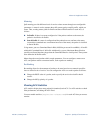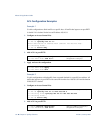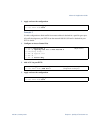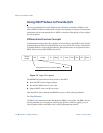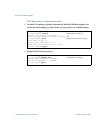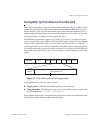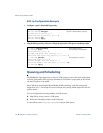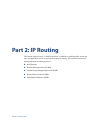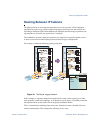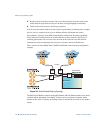
Alteon OS Application Guide
Chapter 7: Quality of Service
13942C4911, January 2007
Using 802.1p Priorities to Provide QoS
Alteon OS provides Quality of Service functions based on the priority bits in a packet’s VLAN
header. (The priority bits are defined by the 802.1p standard within the IEEE 802.1q VLAN
header.) The 802.1p bits, if present in the packet, specify the priority that should be given to
packets during forwarding. Packets with a numerically higher (non-zero) priority are given for-
warding preference over packets with lower priority bit value.
The IEEE 802.1p standard uses eight levels of priority (0-7). Priority 7 is assigned to highest
priority network traffic, such as OSPF or RIP routing table updates, priorities 5-6 are assigned
to delay-sensitive applications such as voice and video, and lower priorities are assigned to
standard applications. A value of 0 (zero) indicates a “best effort” traffic prioritization, and this
is the default when traffic priority has not been configured on your network. The GbESM can
filter packets based on the 802.1p values, and it can assign or overwrite the 802.1p value in the
packet.
Figure 7-3 Layer 2 802.1q/802.1p VLAN tagged packet
Ingress packets receive a priority value, as follows:
Tagged packets—GbESM reads the 802.1p priority in the VLAN tag.
Untagged packets—GbESM tags the packet and assigns an 802.1p priority, based on the
port’s default priority (/cfg/port x/8021ppri).
Egress packets are placed in a COS queue based on the priority value, and scheduled for trans-
mission based on the scheduling weight of the COS queue.
7 6 5 4 3 2 1 0
Priority
7 6 5 4 3 2 1 0
VLAN Identifier (VID)
SFD
DMAC
SMAC Tag
E Type
Data
FCS
Preamble



